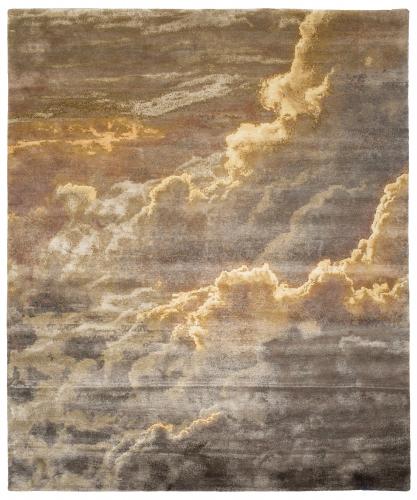
This object is eligible for a Certificate of BADA Provenance
The BADA Standard
- Since 1918, BADA has been the leading association for the antiques and fine art trade
- Members are elected for their knowledge, integrity and quality of stock
- Our clients are protected by BADA’s code of conduct
- Our dealers’ membership is reviewed and renewed annually
- Bada.org is a non-profit site: clients deal directly with members and they pay no hidden fees
This early Turkoman Yomut main carpet dates to the early 19th century.
It is a carpet with great gravitas, which is a product of the combination of colour, simplicity of design and spacing and scale.
Seven diagonal rows of kepse guls constitute the field design. The rows alternate between white/blue and red/blue series of guls, and each diagonal ends in a half complete gul on the border, with the first pair of incomplete guls on the sides only rudiments of the whole form.
Interestingly, the guls at the bottom and top ends of the field contain in their centre the c elements, or half-moon shapes, that we know from the so-called c-gul carpets of the Yomut tribe. This might well be an indication of this carpet having been woven in a geographical area where other, "foreign" designs were known, or by a weaver who had been exposed through other contacts (inter-tribal marriage, for example) to elements of a different design repertoire.
Hans Sienknecht, in his investigation of the development of c-gul carpets, includes a very similar kepse-gul carpet to the piece in hand: it has the same diagonal arrangement of kepse guls which, in this case, have the c element in the centre of all the guls. This carpet, which is in the Textile Museum, Washington, is also dated to the first half of the 19th century (see Sienknecht, Hans, "A Turkic Heritage. The Development of Ornament on Yomut C-Gul Carpets" in: Hali, Issue 47, October 1989, pp. 30 - 39, specifically figure 20, p. 39).
The main border in our carpet is flanked by two minor borders with a lattice of diamonds filled with squares. On the sides, the border design is a curled leaf, at the bottom and top ends it is a chain of spiked flower heads within white octagons.
The elems at both ends are a network of trefoil plant structures almost the shape of tridents. Overall, the design language of the carpet is one of strict geometry, as is typical of Turkoman carpets. ( For another, later, Yomut main carpet with a kepse-gul design see our website. A comparison illustrates the development from very simple, sparse decoration towards a somewhat busier field design).
The carpet is woven in a symmetrical, or Turkish, knot with a brown weft. It is in excellent condition.
Dimensions
322 x 173 cmCondition report
excellent condition, great quality of weave, wool and dyesStock number
7029The BADA Standard
- Since 1918, BADA has been the leading association for the antiques and fine art trade
- Members are elected for their knowledge, integrity and quality of stock
- Our clients are protected by BADA’s code of conduct
- Our dealers’ membership is reviewed and renewed annually
- Bada.org is a non-profit site: clients deal directly with members and they pay no hidden fees



